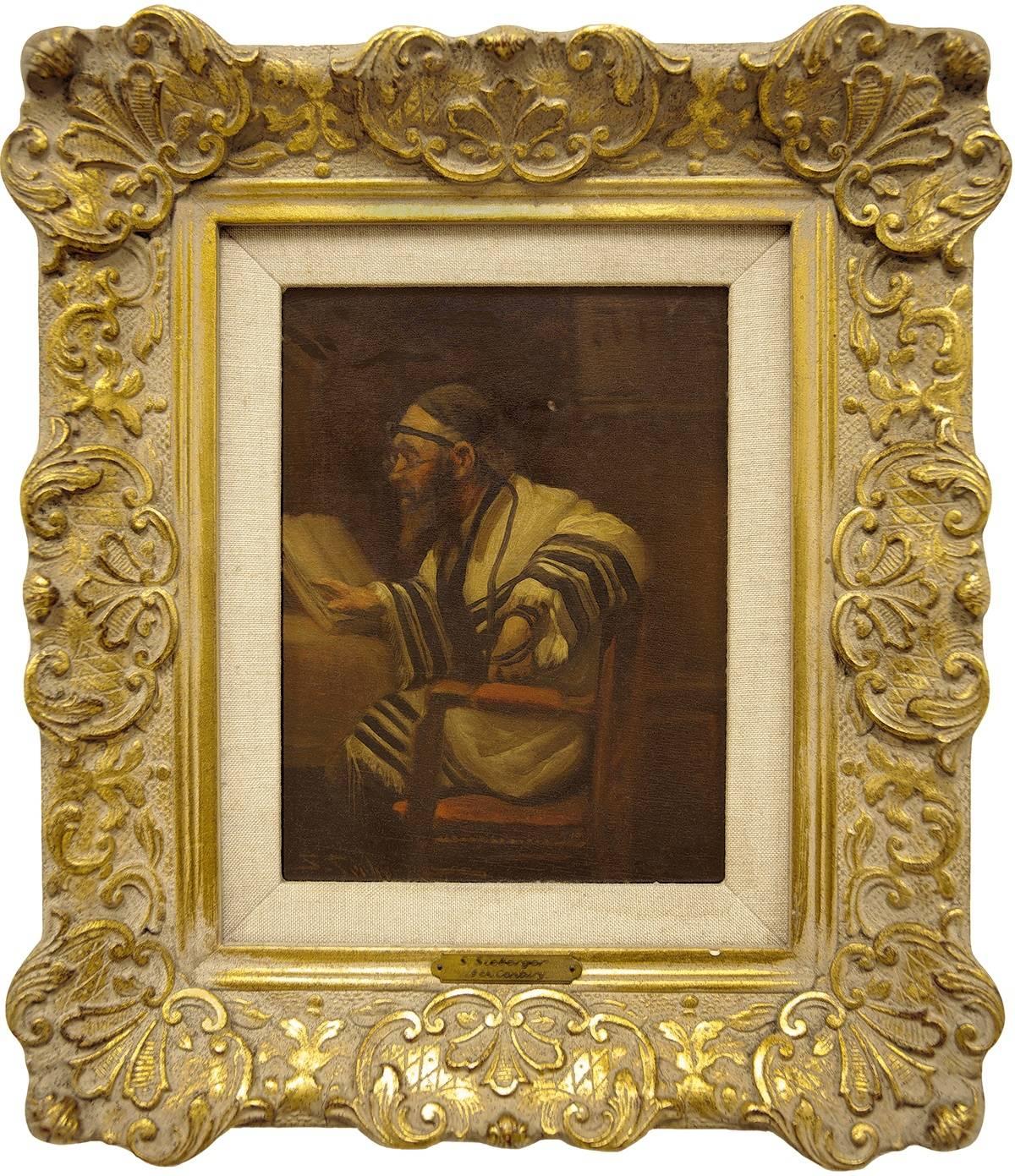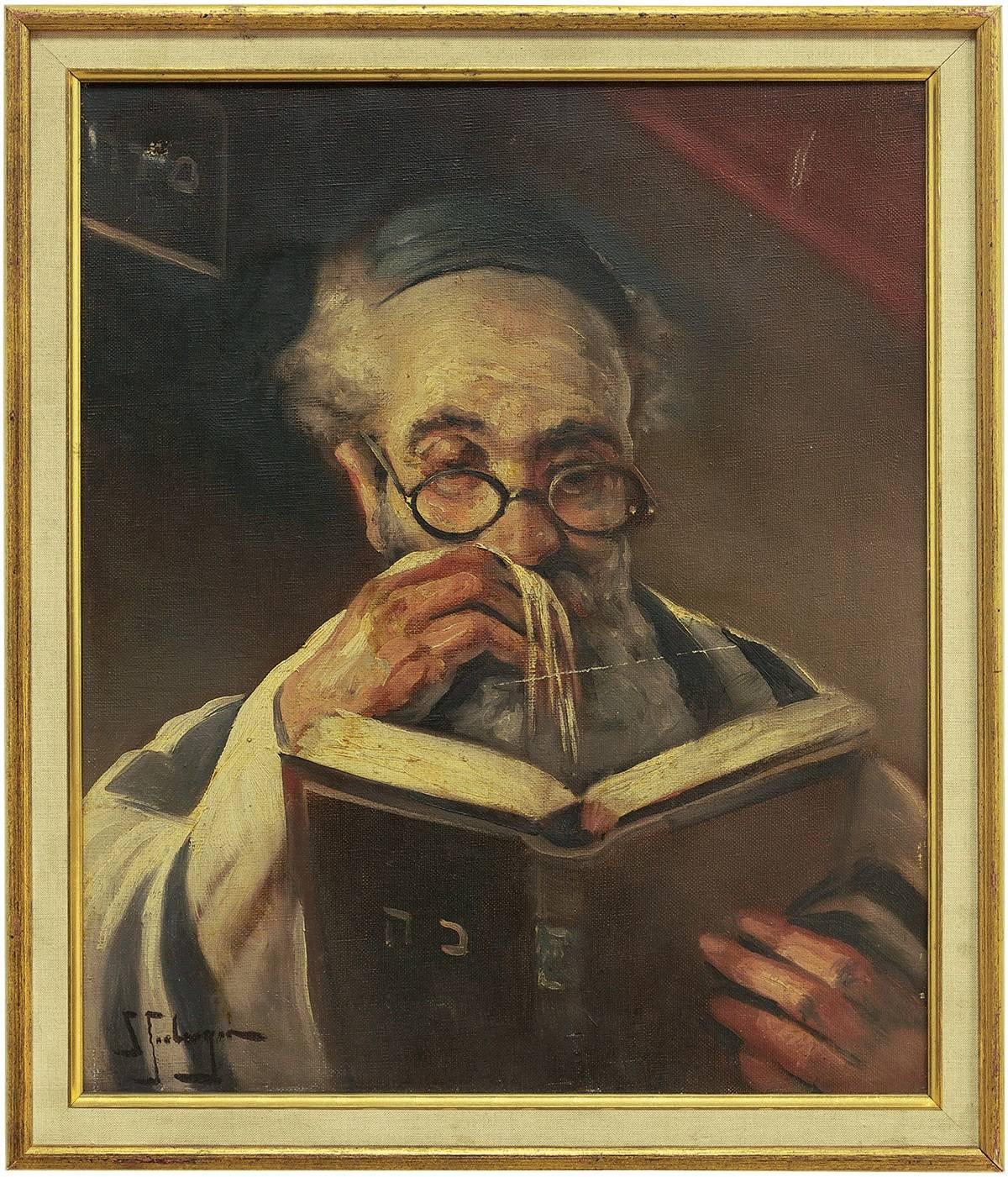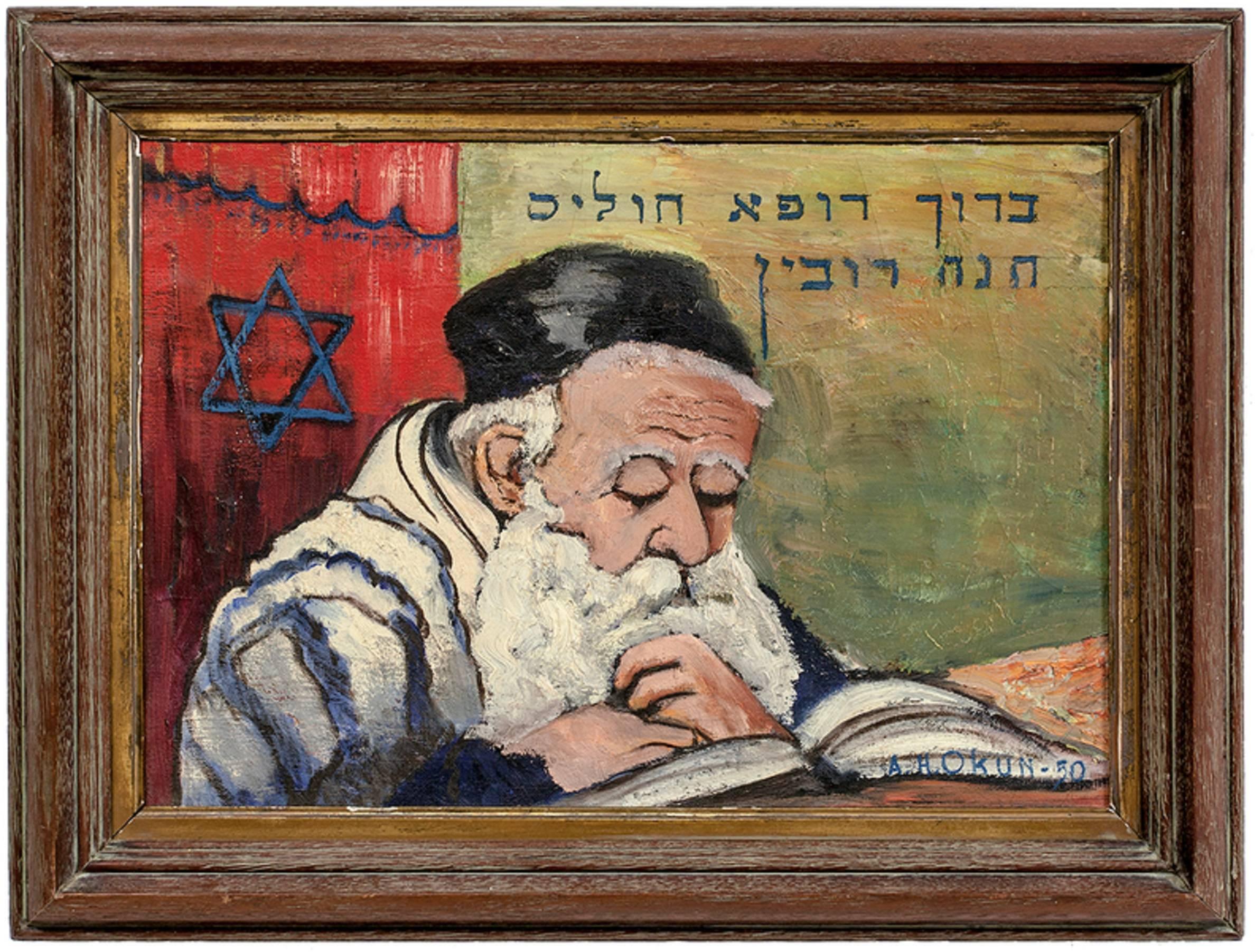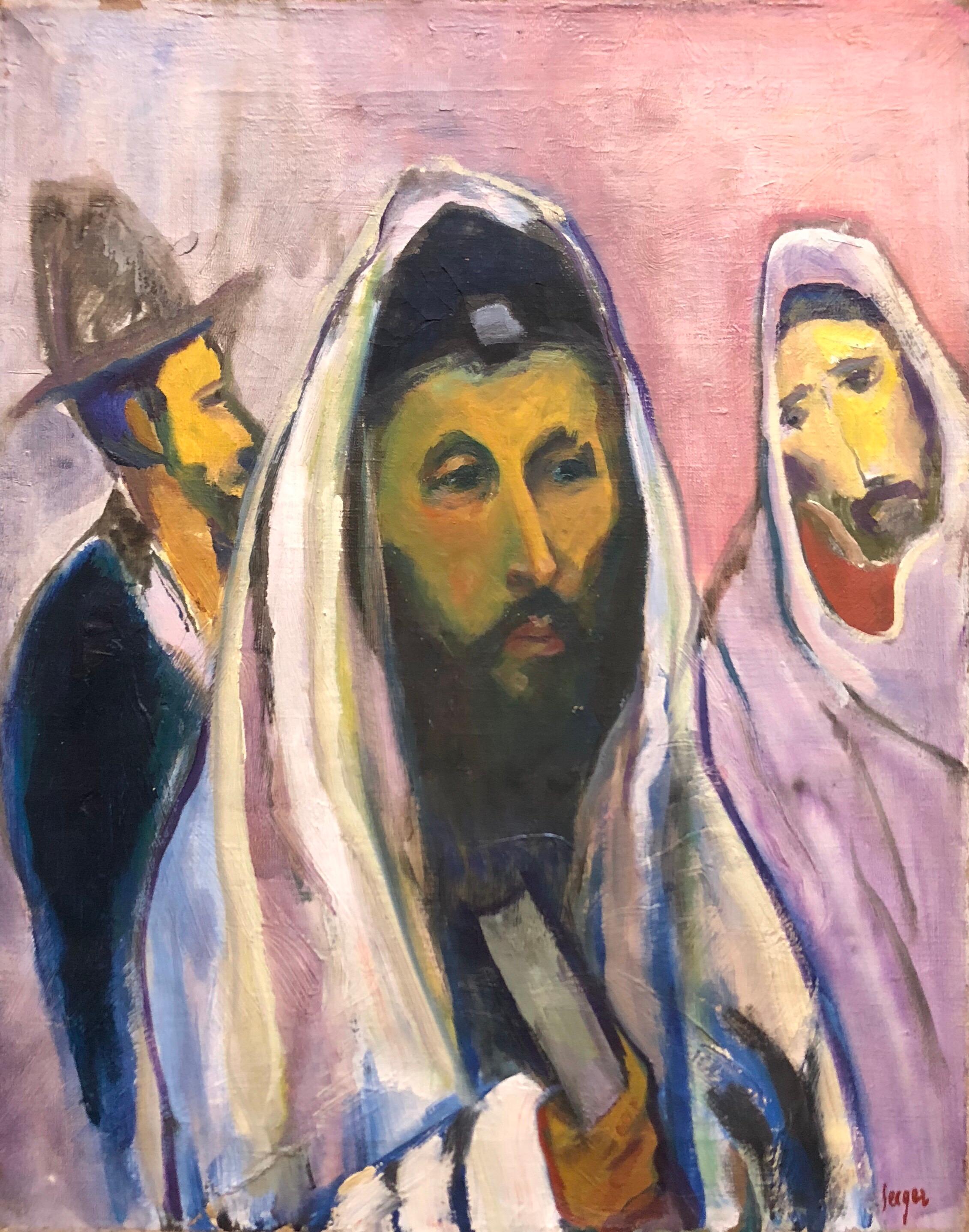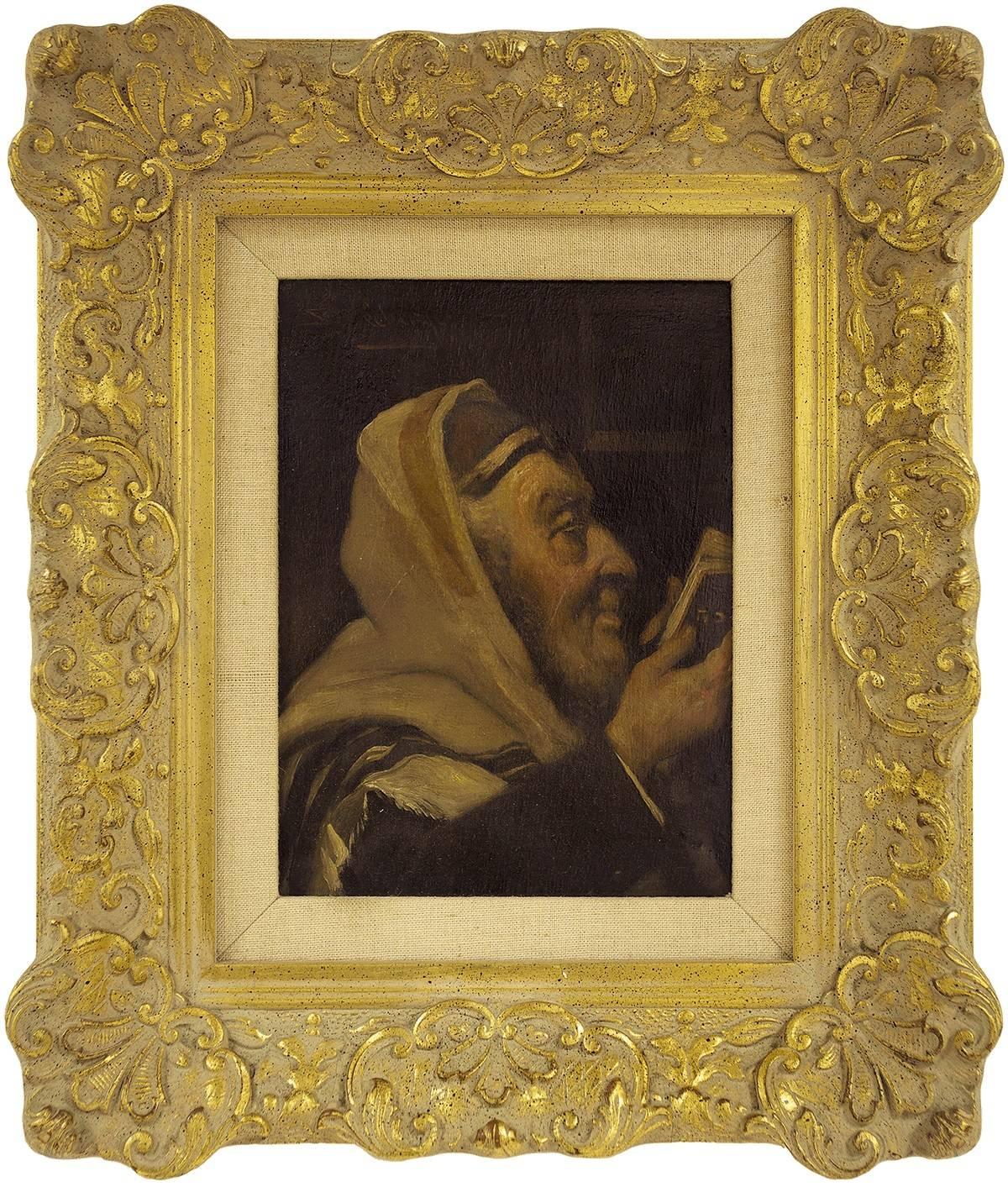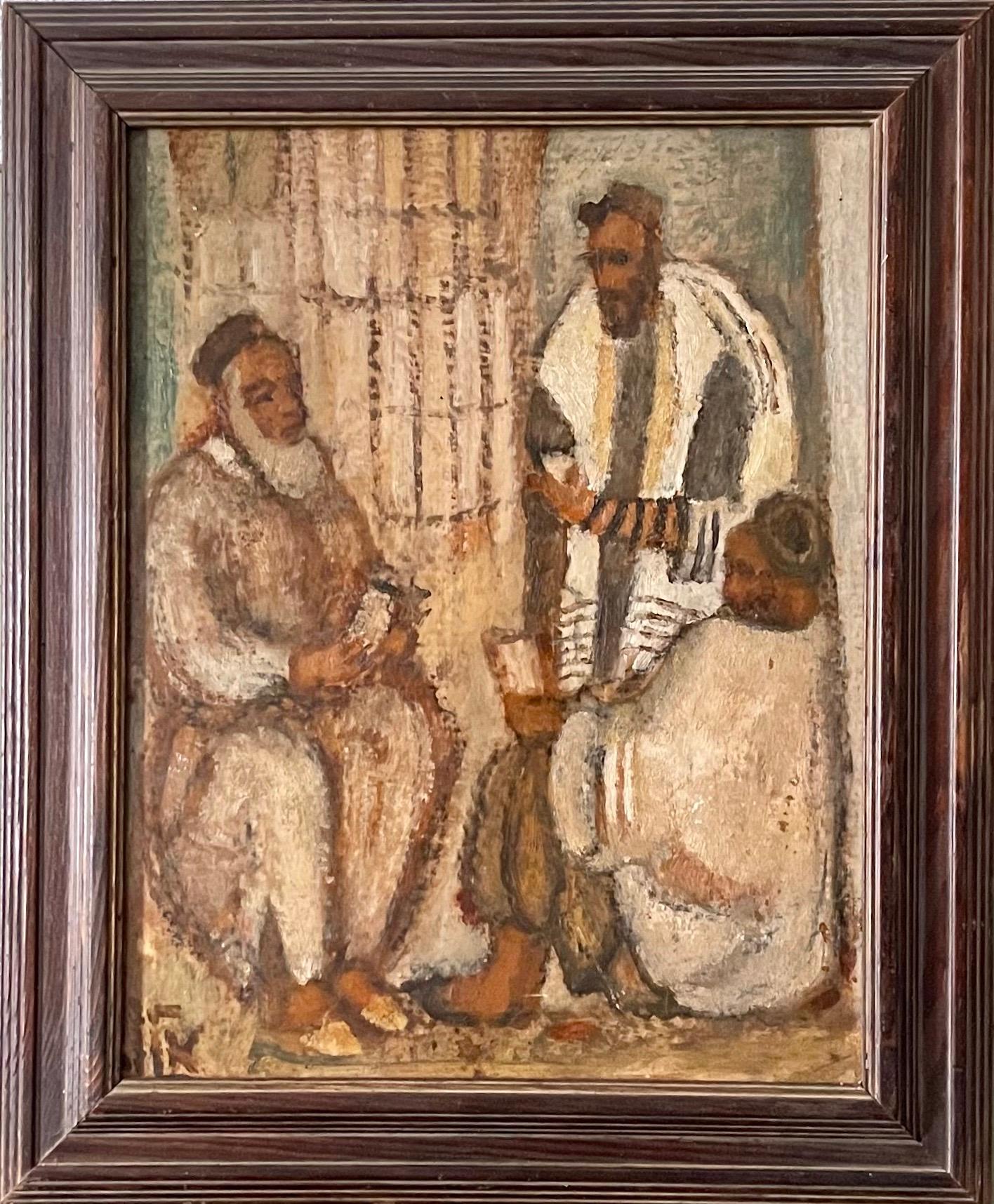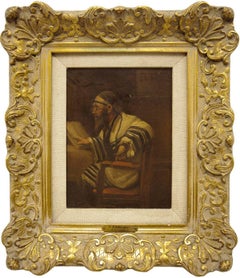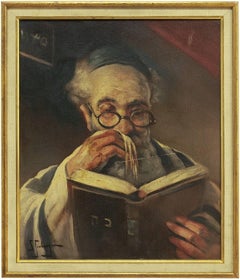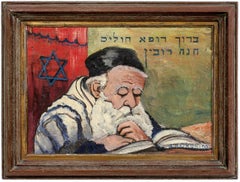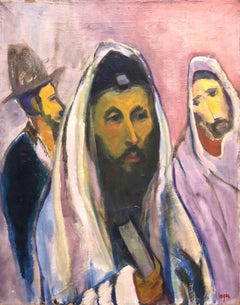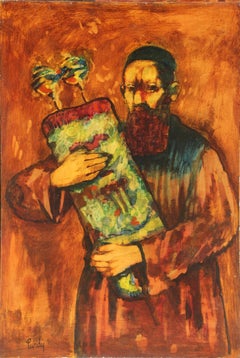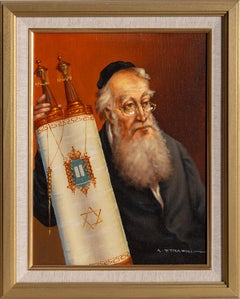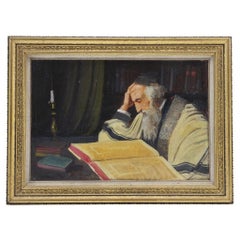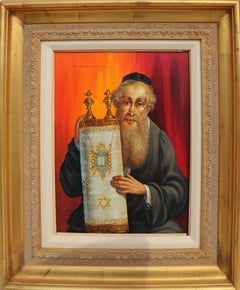Items Similar to Rabbi in Prayer, Judaica Oil Painting
Want more images or videos?
Request additional images or videos from the seller
1 of 6
Israel AbramofskyRabbi in Prayer, Judaica Oil Painting
$2,200
£1,669.31
€1,908.71
CA$3,072.80
A$3,416.54
CHF 1,783.93
MX$41,587.60
NOK 22,762.15
SEK 21,327.05
DKK 14,245.02
Shipping
Retrieving quote...The 1stDibs Promise:
Authenticity Guarantee,
Money-Back Guarantee,
24-Hour Cancellation
About the Item
Israel Abramofsky (September 10, 1888 - January 16, 1975) was a Russian-born artist, who trained in Paris and settled in the United States, known for his landscape works and works depicting Jewish life in Eastern Europe.
Abramofsky was born in Kiev, Russian Empire (present-day Ukraine) and left Czarist Russia for Vienna, Austria where he first took an interest in art. He lived briefly in Paris and arrived in the United States in 1909. Toledo, Ohio became his home. He went back to France in 1914, 1920 and 1925 to study with Jean Paul Laurens and Lucien Simon in the Julian Academy. In Paris, he saw the works of Chirico, Van Dongen, Delauney, Lhote, Leger, Ozenfant, Dufresne, Dufy, Gris, Modigliani, Segonzac, Gromaire and many others. For his first trip back to Paris from Ohio, he came with a letter of introduction from noted Toledo mayor Brand Whitlock.
His works have been represented in collections of the Luxembourg Museum, the Museum in Israel, the Brooklyn Museum, in numerous museums in Ohio and many private collections.
In a brief biographical piece, he wrote, "I am unable to classify myself, except I hope that I am a part of the twentieth century. I do feel that my Jewish types reflect the tradition and beliefs that . . . have kept them separate as a people since Abraham."
Exhibitions
"Retrospective Exhibition of the Drawings and Paintings of Toledo's I. Abramovsky, March 8–19, 1966, Jewish Community Center, Toledo, Ohio
I. Abramofsky, Exhibition and Sale, March 28 through April 4, 1976, Temple Shomer Emunim, Sylvania, Ohio
- Creator:Israel Abramofsky (1888-1975, American)
- Dimensions:Height: 26 in (66.04 cm)Width: 17.25 in (43.82 cm)
- Medium:
- Period:
- Condition:Measurements include frame.
- Gallery Location:Surfside, FL
- Reference Number:1stDibs: LU38211624422
About the Seller
4.9
Platinum Seller
Premium sellers with a 4.7+ rating and 24-hour response times
Established in 1995
1stDibs seller since 2014
1,784 sales on 1stDibs
Typical response time: <1 hour
- ShippingRetrieving quote...Shipping from: Surfside, FL
- Return Policy
Authenticity Guarantee
In the unlikely event there’s an issue with an item’s authenticity, contact us within 1 year for a full refund. DetailsMoney-Back Guarantee
If your item is not as described, is damaged in transit, or does not arrive, contact us within 7 days for a full refund. Details24-Hour Cancellation
You have a 24-hour grace period in which to reconsider your purchase, with no questions asked.Vetted Professional Sellers
Our world-class sellers must adhere to strict standards for service and quality, maintaining the integrity of our listings.Price-Match Guarantee
If you find that a seller listed the same item for a lower price elsewhere, we’ll match it.Trusted Global Delivery
Our best-in-class carrier network provides specialized shipping options worldwide, including custom delivery.More From This Seller
View AllRabbi In Prayer, Early 20th Century Oil Painting
By S. Sieberger
Located in Surfside, FL
Samuel Seiberger, (Seeberger) was a known artist and post-card designer who lived in Paris and was active circa 1900-1940. He was arrested for being a Jew when the Germans occupied Paris in the 1940s. He was brought into a concentration camp...
Category
Early 20th Century Modern Portrait Paintings
Materials
Oil
Rabbi In Prayer (the Shema) Oil Painting
By Samuel Seeberger
Located in Surfside, FL
Genre: Judaica
Subject: Portrait
Medium: Oil
Surface: Canvas
Dimensions: 18 x 15
Dimensions w/Frame: 20 1/2 x 17 3/4
Samuel Seeberger (Sieberger) was a known artist and post-card designer who lived in Paris and was active around 1900-1940. He was arrested for being a Jew when the Germans occupied Paris in the 1940s. He was brought into a concentration camp...
Category
20th Century Impressionist Figurative Paintings
Materials
Canvas, Oil
Jewish Folk Art Painting "Blessed is the Healer of the Sick" Rabbi at Prayer
Located in Surfside, FL
Signed A.H. Okun
Genre: Judaica
Subject: People
Medium: Oil
Surface: Canvas
Dimensions: 11" x 14"
Dimensions w/Frame: 15" x 19 3/4"
Category
Mid-20th Century Folk Art Figurative Paintings
Materials
Canvas, Oil
Polish French Fauvist Judaica Oil Painting Rabbi at Prayer
By Frederick B. Serger
Located in Surfside, FL
Genre: Impressionist
Subject: People
Medium: Oil
Surface: Panel
Frederick Serger (given name Frederick Bedrick Sinaberger) was born in 1889 to a family of Jewish manufacturers in the village of Ivancice near Brno Moravia, a province of Czechoslovakia. Showing artistic talent at a young age, he attended art schools in Brno, Vienna, and Munich. During World War I, Serger joined the Austrian Army...
Category
1940s Fauvist Figurative Paintings
Materials
Canvas, Oil
In Prayer, Early 20th Century, Rabbi Portrait Judaica Oil Painting
By Samuel Seeberger
Located in Surfside, FL
Samuel Seeberger (Sieberger) was a known artist and post-card designer who lived in Paris and was active around 1900-1940. He was arrested for being a Jew when the Germans occupied Paris in the 1940s. He was brought into a concentration camp...
Category
Early 20th Century Modern Portrait Paintings
Materials
Linen, Oil
Synagogue Interior Jerusalem Modernist Israeli Judaica Oil Painting Rabbi Prayer
By Arieh Allweil
Located in Surfside, FL
ARIEH ALLWEIL (ARIE ALWEIL) 1901-1967
Galicia 1901-1967 Safed, Israel (Ukrainian/Polish/Israeli)
Arieh Allweil, born 1901, Galicia. Immigrated to Palestine in 1920. Studies: 1921-25...
Category
20th Century Modern Figurative Paintings
Materials
Canvas, Oil, Board
You May Also Like
Rabbi, Oil Painting by Donald Roy Purdy
By Donald Roy Purdy
Located in Long Island City, NY
Artist: Donald Roy Purdy, American (1924 - )
Title: Rabbi
Year: circa 1960
Medium: Oil on Masonite, signed l.r.
Size: 36 x 24 in. (91.44 x 60.96 cm)
Category
1960s Post-War Figurative Paintings
Materials
Masonite, Oil
$6,000 Sale Price
20% Off
Rabbi with Torah, Oil Painting by Abraham Straski 1950
By Abraham Straski
Located in Long Island City, NY
Rabbi with Torah
Abraham Straski, Polish (1903–1987)
Date: 1950
Oil on Canvas on Wood, signed and dated
Size: 16 x 12 in. (40.64 x 30.48 cm)
Frame Size: 19.5 x 15.5 inches
Category
1950s Post-War Portrait Paintings
Materials
Canvas, Oil, Wood
Alfréd Lakos "Rabbi Studying Torah", Oil on Board
By Alfred Lakos
Located in New York, NY
A deeply intimate and atmospheric composition by Hungarian Jewish artist Alfréd Lakos (1870–1961), titled "Rabbi Studying Torah", rendered in oil on board. This evocative painting ca...
Category
Early 20th Century Paintings
Materials
Wood, Paint
Rabbi and Torah, Oil Painting by Abraham Straski
By Abraham Straski
Located in Long Island City, NY
Artist: Abraham Straski, Polish (1903 - 1987)
Title: Rabbi and Torah
Year: circa 1957
Medium: Oil on Canvas, signed l.r.
Image Size: 16 x 12 inches
Frame Size: 26 x 20 inches
Category
1950s Post-War Portrait Paintings
Materials
Canvas, Oil
Rabbi with Torah, 1970s Oil Painting by Donald Roy Purdy
By Donald Roy Purdy
Located in Long Island City, NY
Artist: Donald Roy Purdy, American (1924 - )
Title: Rabbi with Torah
Year: circa 1970
Medium: Oil on Masonite, signed l.r.
Size: 36 x 24 in. (91.44 x 60.96 cm)
Frame Size: 45 x 31 in...
Category
1970s Modern Figurative Paintings
Materials
Masonite, Oil
Judaica Portrait Oil Painting of a Rabbi Examining the Lulav Signed Rosendall
Located in Long Island City, NY
An oil painting on canvas representing a Judaica portrait of an old Rabbi, after the original oil painting, Examining the Lulav, . Signed by the artist, Rosendall, lower left. Framed...
Category
Antique 19th Century Unknown Paintings
Materials
Paint
$1,250 Sale Price
50% Off
